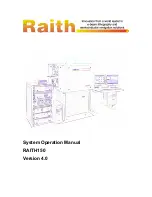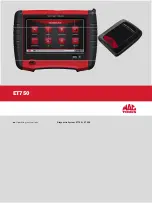
•
22
•
battery is weak or bad.
TABLE 1
LOAD TEST
BATTERY CONDITION
Good (green)
The battery capacity is OK. The battery may or may not
be fully charged. Check the specific gravity of the battery
to determine the state of charge, check for an electrical
drain or possible charging system trouble. Recharge the
battery to a full level.
Weak or bad, but needle remains
steady. (yellow or red)
The battery capacity is not satisfactory. The battery
may be either defective or not fully charged. Check the
specific gravity to determine which condition exists. If
charging does not bring the specific gravity to the full
charge level, the battery should be replaced.
Weak or bad, but needle
continues to fall. (yellow or red)
The battery may be defective or very run down. Release
the load switch and note the volt meter reaction. Voltage
recovery to 12 volts or above within a few seconds
indicates a defective battery. A slow voltage recovery
indicates a run down condition. For best results, check
the specific gravity.
7.
TESTING THE CHARGING SYSTEM
7.1
Connect the positive (red) clamp to the positive (POS, P, +) battery post. Connect the
negative (black) clamp to the negative (NEG, N, -) battery post. Rock the clamps back
and forth to ensure a good electrical connection.
7.2
Start the engine and run it at 1200 to 1500 rpm.
CAUTION:
Stay clear of moving
engine parts to avoid personal injury.
7.3
Note the meter reading with all of the electrical accessories off. It should be in the green
“good” band in the “charging system” scale (see illustration in section 9).
7.4
With the headlights and blower motor on high, the meter should remain in the green
“good” band.
7.5
If the meter reads in the red band or outside the charging system zone, trouble is indicated.
8.
STARTER MOTOR TEST
This test identifies excessive starter current draw, which makes starting difficult and shortens
battery life. Perform the battery load test first, to make sure the battery is in good condition.
NOTE:
The engine must be at a normal operating temperature.
8.1
Perform a basic battery load test (see section 2). In addition, note the exact voltage with
the load test on (see illustration in section 9). If the battery tests either weak or bad, this
test cannot be performed.
8.2
Using the load voltage obtained above, look on Table 2 or on the meter face to find the
minimum cranking voltage listed. If the engine is less then 200 CID, use the next higher
minimum cranking voltage. For example, if the load voltage is 11.00, use 10.2 for the
minimum cranking voltage instead of 9.7.
8.3
If possible, disable the vehicle’s ignition system so that it will not start. The test works
best if the starter cranks for 2 to 5 seconds.
8.4
Crank the engine and note the voltage reading during engine cranking.
8.5
If the cranking voltage is below the minimum cranking voltage in Table 2, the starter
current draw is excessive. If the starter cranks slowly, check for high resistance or
poor connections.
TABLE 2
STARTER TEST VOLTAGE
LOAD VOLTAGE
10.2
10.4
10.6
10.8
11.0
11.2
11.4
MINIMUM CRANKING
VOLTAGE
7.7
8.2
8.7
9.2
9.7
10.2
10.6
















































